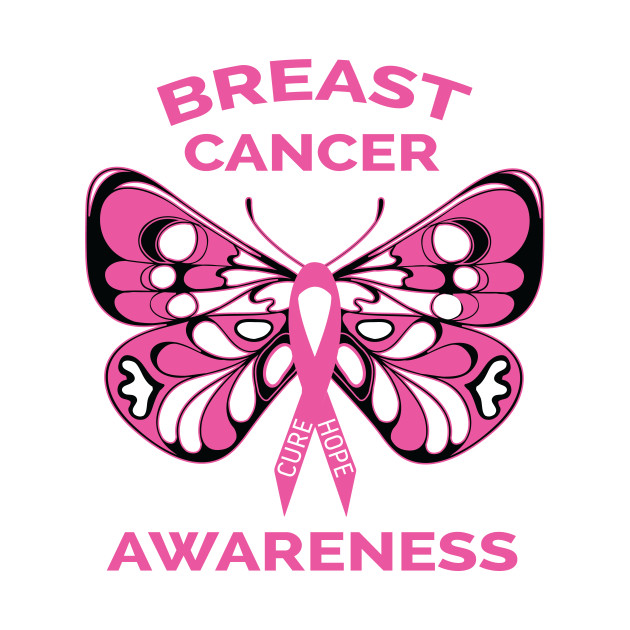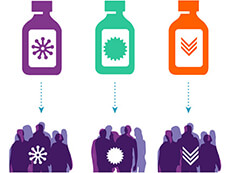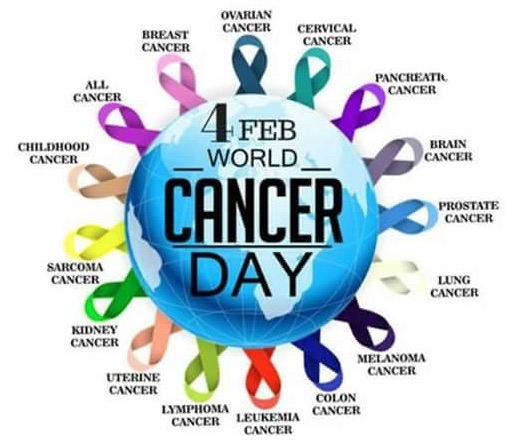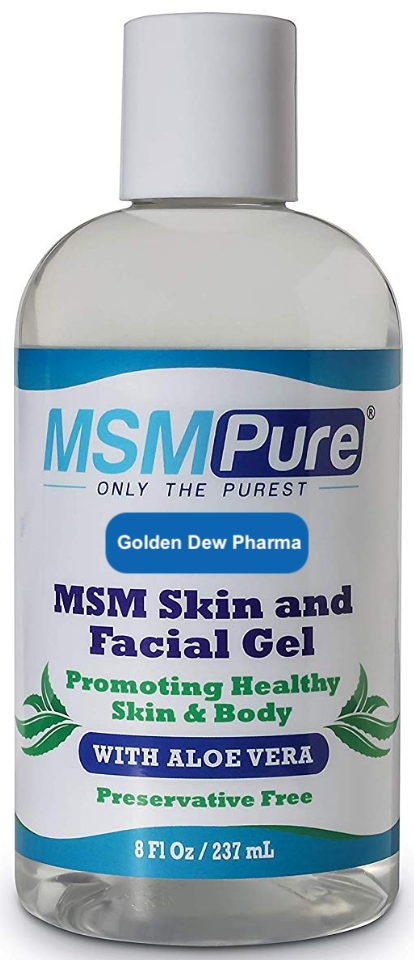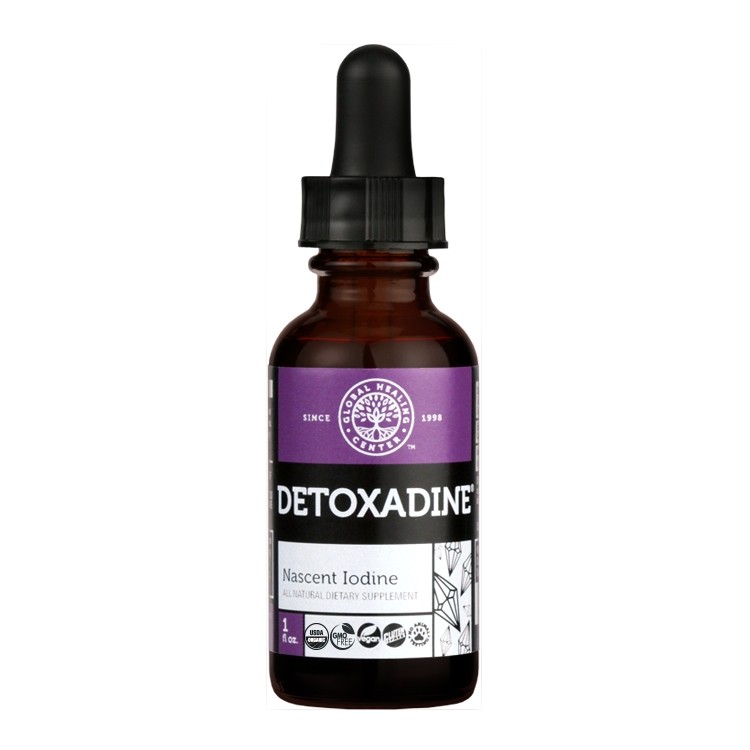|
Sulfur is called nature's "beauty mineral" because it keeps skin smooth and youthful and hair glossy. Sulfur is necessary for the production of collagen and keratin, proteins necessary for the health and maintenance of skin, nails and hair'
$14.95
Iodine is a trace mineral that is vital to the function of the thyroid gland. The human body does not make iodine, so all iodine intake must come from either our diet or from supplements.
|
|
Cancer Treatment >
Targeted Therapy
Targeted Therapy to Treat Cancer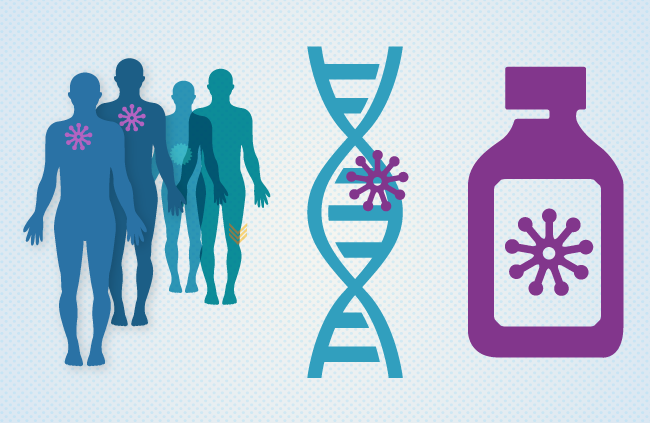
What Is Targeted Therapy?Targeted therapy is the foundation of precision medicine. It is a type of cancer treatment that targets the changes in cancer cells that help them grow, divide, and spread. As researchers learn more about the cell changes that drive cancer, they are better able to design promising therapies that target these changes or block their effects. Types of Targeted TherapyMost targeted therapies are either small-molecule drugs or monoclonal antibodies. Small-molecule drugs are small enough to enter cells easily, so they are used for targets that are inside cells. Monoclonal antibodies, also known as therapeutic antibodies, are proteins produced in the lab. These proteins are designed to attach to specific targets found on cancer cells. Some monoclonal antibodies mark cancer cells so that they will be better seen and destroyed by the immune system. Other monoclonal antibodies directly stop cancer cells from growing or cause them to self-destruct. Still others carry toxins to cancer cells.are drugs that are not able to enter cells easily. Instead, they attach to specific targets on the outer surface of cancer cells. Who Receives Targeted TherapyFor some types of cancer, most patients with that cancer will have a target for a certain drug, so they can be treated with that drug. But, most of the time, your tumor will need to be tested to see if it contains targets for which we have drugs. To have your tumor tested for targets, you may need to have a biopsy. A biopsy is a procedure in which your doctor removes a piece of the tumor for testing. There are some risks to having a biopsy. These risks vary depending on the size of the tumor and where it is located. Your doctor will explain the risks of having a biopsy for your type of tumor. How Targeted Therapy Works Against CancerMost targeted therapies help treat cancer by interfering with specific proteins that help tumors grow and spread throughout the body. They treat cancer in many different ways. They can:
Drawbacks of Targeted TherapyTargeted therapies do have some drawbacks. These include:
Targeted Therapy Can Cause Side EffectsTargeted therapy can cause side effects. The side effects you may have depend on the type of targeted therapy you receive and how your body reacts to the therapy. The most common side effects of targeted therapy include diarrhea and liver problems. Other side effects might include problems with blood clotting and wound healing, high blood pressure, fatigue, mouth sores, nail changes, the loss of hair color, and skin problems. Skin problems might include rash or dry skin. Very rarely, a hole might form through the wall of the esophagus, stomach, small intestine, large bowel, rectum, or gallbladder. There are medicines for many of these side effects. These medicines may prevent the side effects from happening or treat them once they occur. Most side effects of targeted therapy go away after treatment ends. Other RisksSince your tumor may be tested to find targets for treatment, there may be risks to the privacy of your personal information. The privacy of all information found from these tests is protected by law. But, there is a slight risk that genetic or other information from your health records may be obtained by people outside of the medical team. What to Expect When Having Targeted TherapyHow Targeted Therapies Are GivenSmall-molecule drugs are pills or capsules that you can swallow. Monoclonal antibodies are usually given through a needle in a blood vein. Where You Go for Targeted Therapy Where you go for treatment depends on which drugs you are getting and how they are given. You may take targeted therapy at home. Or, you may receive targeted therapy in a doctor’s office, clinic, or outpatient unit in a hospital. Outpatient means you do not spend the night in the hospital. How Often You Will Receive Targeted Therapy How often and how long you receive targeted therapy depends on:
You may have treatment every day, every week, or every month. Some targeted therapies are given in cycles. A cycle is a period of treatment followed by a period of rest. The rest period gives your body a chance to recover and build new healthy cells. How Targeted Therapy May Affect You Targeted therapy affects people in different ways. How you feel depends on how healthy you are before treatment, your type of cancer, how advanced it is, the kind of targeted therapy you are getting, and the dose. Doctors and nurses cannot know for certain how you will feel during treatment. How to Tell Whether Targeted Therapy Is Working You will see your doctor often. He or she will give you physical exams and ask you how you feel. You will have medical tests, such as blood tests, x-rays, and different types of scans. Targeted Cancer Therapies
What are targeted cancer therapies? Targeted cancer therapies are drugs or other substances that block the growth and spread of cancer by interfering with specific molecules ("molecular targets") that are involved in the growth, progression, and spread of cancer. Targeted cancer therapies are sometimes called "molecularly targeted drugs," "molecularly targeted therapies," "precision medicines," or similar names. Targeted therapies differ from standard chemotherapy in several ways:
Targeted therapies are currently the focus of much anticancer drug development. They are a cornerstone of precision medicine, a form of medicine that uses information about a person’s genes and proteins to prevent, diagnose, and treat disease. Many targeted cancer therapies have been approved by the Food and Drug Administration (FDA) to treat specific types of cancer. Others are being studied in clinical trials (research studies with people), and many more are in preclinical testing (research studies with animals). How are targets for targeted cancer therapies identified? The development of targeted therapies requires the identification of good targets—that is, targets that play a key role in cancer cell growth and survival. (It is for this reason that targeted therapies are sometimes referred to as the product of "rational" drug design.) One approach to identify potential targets is to compare the amounts of individual proteins in cancer cells with those in normal cells. Proteins that are present in cancer cells but not normal cells or that are more abundant in cancer cells would be potential targets, especially if they are known to be involved in cell growth or survival. An example of such a differentially expressed target is the human epidermal growth factor receptor 2 protein(HER-2). HER-2 is expressed at high levels on the surface of some cancer cells. Several targeted therapies are directed against HER-2, including trastuzumab (Herceptin®), which is approved to treat certain breast and stomach cancers that overexpress HER-2. Another approach to identify potential targets is to determine whether cancer cells produce mutant (altered) proteins that drive cancer progression. For example, the cell growth signaling protein BRAF is present in an altered form (known as BRAF V600E) in many melanomas. Vemurafenib (Zelboraf®) targets this mutant form of the BRAF protein and is approved to treat patients with inoperable or metastatic melanoma that contains this altered BRAF protein. Researchers also look for abnormalities in chromosomes that are present in cancer cells but not in normal cells. Sometimes these chromosome abnormalities result in the creation of a fusion gene (a gene that incorporates parts of two different genes) whose product, called a fusion protein, may drive cancer development. Such fusion proteins are potential targets for targeted cancer therapies. For example, imatinib mesylate (Gleevec®) targets the BCR-ABL fusion protein, which is made from pieces of two genes that get joined together in some leukemia cells and promotes the growth of leukemic cells. How are targeted therapies developed? Once a candidate target has been identified, the next step is to develop a therapy that affects the target in a way that interferes with its ability to promote cancer cell growth or survival. For example, a targeted therapy could reduce the activity of the target or prevent it from binding to a receptor that it normally activates, among other possible mechanisms. Most targeted therapies are either small molecules or monoclonal antibodies. Small-molecule compounds are typically developed for targets that are located inside the cell because such agents are able to enter cells relatively easily. Monoclonal antibodies are relatively large and generally cannot enter cells, so they are used only for targets that are outside cells or on the cell surface. Candidate small molecules are usually identified in what are known as "high-throughput screens," in which the effects of thousands of test compounds on a specific target protein are examined. Compounds that affect the target (sometimes called "lead compounds") are then chemically modified to produce numerous closely related versions of the lead compound. These related compounds are then tested to determine which are most effective and have the fewest effects on nontarget molecules. Monoclonal antibodies are developed by injecting animals (usually mice) with purified target proteins, causing the animals to make many different types of antibodies against the target. These antibodies are then tested to find the ones that bind best to the target without binding to nontarget proteins. Before monoclonal antibodies are used in humans, they are "humanized" by replacing as much of the mouse antibody molecule as possible with corresponding portions of human antibodies. Humanizing is necessary to prevent the human immune system from recognizing the monoclonal antibody as "foreign" and destroying it before it has a chance to bind to its target protein. Humanization is not an issue for small-molecule compounds because they are not typically recognized by the body as foreign. What types of targeted therapies are available? Many different targeted therapies have been approved for use in cancer treatment. These therapies include hormone therapies, signal transduction inhibitors, gene expressionmodulators, apoptosis inducers, angiogenesis inhibitors, immunotherapies, and toxindelivery molecules.
Cancer vaccines and gene therapy are sometimes considered targeted therapies because they interfere with the growth of specific cancer cells. Information about cancer vaccines can be found in the NCI fact sheet Biological Therapies for Cancer. How is it determined whether a patient is a candidate for targeted therapy? For some types of cancer, most patients with that cancer will have an appropriate target for a particular targeted therapy and, thus, will be candidates to be treated with that therapy. CML is an example: most patients have the BCR-ABL fusion gene. For other cancer types, however, a patient’s tumor tissue must be tested to determine whether or not an appropriate target is present. The use of a targeted therapy may be restricted to patients whose tumor has a specific gene mutation that codes for the target; patients who do not have the mutation would not be candidates because the therapy would have nothing to target. Sometimes, a patient is a candidate for a targeted therapy only if he or she meets specific criteria (for example, their cancer did not respond to other therapies, has spread, or is inoperable). These criteria are set by the FDA when it approves a specific targeted therapy. What are the limitations of targeted cancer therapies? Targeted therapies do have some limitations. One is that cancer cells can become resistantto them. Resistance can occur in two ways: the target itself changes through mutation so that the targeted therapy no longer interacts well with it, and/or the tumor finds a new pathway to achieve tumor growth that does not depend on the target. For this reason, targeted therapies may work best in combination. For example, a recent study found that using two therapies that target different parts of the cell signaling pathway that is altered in melanoma by the BRAF V600E mutation slowed the development of resistance and disease progression to a greater extent than using just one targeted therapy (1). Another approach is to use a targeted therapy in combination with one or more traditional chemotherapy drugs. For example, the targeted therapy trastuzumab (Herceptin®) has been used in combination with docetaxel, a traditional chemotherapy drug, to treat women with metastatic breast cancer that overexpresses the protein HER2/neu. Another limitation of targeted therapy at present is that drugs for some identified targets are difficult to develop because of the target’s structure and/or the way its function is regulated in the cell. One example is Ras, a signaling protein that is mutated in as many as one-quarter of all cancers (and in the majority of certain cancer types, such as pancreatic cancer). To date, it has not been possible to develop inhibitors of Ras signaling with existing drug development technologies. However, promising new approaches are offering hope that this limitation can soon be overcome. What are the side effects of targeted cancer therapies? Scientists had expected that targeted cancer therapies would be less toxic than traditional chemotherapy drugs because cancer cells are more dependent on the targets than are normal cells. However, targeted cancer therapies can have substantial side effects. The most common side effects seen with targeted therapies are diarrhea and liver problems, such as hepatitis and elevated liver enzymes. Other side effects seen with targeted therapies include:
Certain side effects of some targeted therapies have been linked to better patient outcomes. For example, patients who develop acneiform rash (skin eruptions that resemble acne) while being treated with the signal transduction inhibitors erlotinib(Tarceva®) or gefitinib (Iressa®), both of which target the epidermal growth factor receptor, have tended to respond better to these drugs than patients who do not develop the rash (2). Similarly, patients who develop high blood pressure while being treated with the angiogenesis inhibitor bevacizumab generally have had better outcomes (3). The few targeted therapies that are approved for use in children can have different side effects in children than in adults, including immunosuppression and impaired sperm production (4). What targeted therapies have been approved for specific types of cancer? The FDA has approved targeted therapies for the treatment of some patients with the following types of cancer (some targeted therapies have been approved to treat more than one type of cancer): Adenocarcinoma of the stomach or gastroesophageal junction: Trastuzumab (Herceptin®), ramucirumab (Cyramza®) Bladder cancer: Atezolizumab (Tecentriq®), nivolumab (Opdivo®), durvalumab (Imfinzi™), avelumab (Bavencio®), pembrolizumab (Keytruda®), erdafitinib (Balversa™) Brain cancer: Bevacizumab (Avastin®), everolimus (Afinitor®) Breast cancer: Everolimus (Afinitor®), tamoxifen (Nolvadex), toremifene (Fareston®), Trastuzumab (Herceptin®), fulvestrant (Faslodex®), anastrozole (Arimidex®), exemestane (Aromasin®), lapatinib (Tykerb®), letrozole (Femara®), pertuzumab (Perjeta®), ado-trastuzumab emtansine (Kadcyla®), palbociclib (Ibrance®), ribociclib (Kisqali®), neratinib maleate (Nerlynx™), abemaciclib (Verzenio™), olaparib (Lynparza™), atezolizumab (Tecentriq®) Cervical cancer: Bevacizumab (Avastin®), pembrolizumab (Keytruda®) Colorectal cancer: Cetuximab (Erbitux®), panitumumab (Vectibix®), bevacizumab (Avastin®), ziv-aflibercept (Zaltrap®), regorafenib (Stivarga®), ramucirumab (Cyramza®), nivolumab (Opdivo®), ipilimumab (Yervoy®) Dermatofibrosarcoma protuberans: Imatinib mesylate (Gleevec®) Endocrine/neuroendocrine tumors: Lanreotide acetate (Somatuline® Depot), avelumab (Bavencio®), lutetium Lu 177-dotatate (Lutathera®), iobenguane I 131 (Azedra®) Head and neck cancer: Cetuximab (Erbitux®), pembrolizumab (Keytruda®), nivolumab (Opdivo®) Gastrointestinal stromal tumor: Imatinib mesylate (Gleevec®), sunitinib (Sutent®), regorafenib (Stivarga®) Giant cell tumor of the bone: Denosumab (Xgeva®) Kidney cancer: Bevacizumab (Avastin®), sorafenib (Nexavar®), sunitinib (Sutent®), pazopanib (Votrient®), temsirolimus (Torisel®), everolimus (Afinitor®), axitinib (Inlyta®), nivolumab (Opdivo®), cabozantinib (Cabometyx™), lenvatinib mesylate (Lenvima®), ipilimumab (Yervoy®), pembrolizumab (Keytruda®) Leukemia: Tretinoin (Vesanoid®), imatinib mesylate (Gleevec®), dasatinib (Sprycel®), nilotinib (Tasigna®), bosutinib (Bosulif®), rituximab (Rituxan®), alemtuzumab (Campath®), ofatumumab (Arzerra®), obinutuzumab (Gazyva®), ibrutinib (Imbruvica®), idelalisib (Zydelig®), blinatumomab (Blincyto®), venetoclax (Venclexta™), ponatinib hydrochloride (Iclusig®), midostaurin (Rydapt®), enasidenib mesylate (Idhifa®), inotuzumab ozogamicin (Besponsa®), tisagenlecleucel (Kymriah®), gemtuzumab ozogamicin (Mylotarg™), rituximab and hyaluronidase human (Rituxan Hycela™), ivosidenib (Tibsovo®), duvelisib (Copiktra™), moxetumomab pasudotox-tdfk (Lumoxiti™), glasdegib maleate (Daurismo™), gilteritinib (Xospata®), tagraxofusp-erzs (Elzonris™) Liver cancer: Sorafenib (Nexavar®), regorafenib (Stivarga®), nivolumab (Opdivo®), lenvatinib mesylate (Lenvima®), pembrolizumab (Keytruda®), cabozantinib (Cabometyx™) Lung cancer: Bevacizumab (Avastin®), crizotinib (Xalkori®), erlotinib (Tarceva®), gefitinib (Iressa®), afatinib dimaleate (Gilotrif®), ceritinib (LDK378/Zykadia™), ramucirumab (Cyramza®), nivolumab (Opdivo®), pembrolizumab (Keytruda®), osimertinib (Tagrisso™), necitumumab (Portrazza™), alectinib (Alecensa®), atezolizumab (Tecentriq®), brigatinib (Alunbrig™), trametinib (Mekinist®), dabrafenib (Tafinlar®), durvalumab (Imfinzi™), dacomitinib (Vizimpro®), lorlatinib (Lorbrena®) Lymphoma: Ibritumomab tiuxetan (Zevalin®), denileukin diftitox (Ontak®), brentuximab vedotin (Adcetris®), rituximab (Rituxan®), vorinostat (Zolinza®), romidepsin (Istodax®), bexarotene (Targretin®), bortezomib (Velcade®), pralatrexate (Folotyn®), ibrutinib (Imbruvica®), siltuximab (Sylvant®), idelalisib (Zydelig®), belinostat (Beleodaq®), obinutuzumab (Gazyva®), nivolumab (Opdivo®), pembrolizumab (Keytruda®), rituximab and hyaluronidase human (Rituxan Hycela™), copanlisib hydrochloride (Aliqopa™), axicabtagene ciloleucel (Yescarta™), acalabrutinib (Calquence®), tisagenlecleucel (Kymriah®), venetoclax (Venclexta™), mogamulizumab-kpkc (Poteligeo®), duvelisib (Copiktra™) Microsatellite instability-high or mismatch repair-deficient solid tumors: Pembrolizumab (Keytruda®) Multiple myeloma: Bortezomib (Velcade®), carfilzomib (Kyprolis®), panobinostat (Farydak®), daratumumab (Darzalex™), ixazomib citrate (Ninlaro®), elotuzumab (Empliciti™) Myelodysplastic/myeloproliferative disorders: Imatinib mesylate (Gleevec®), ruxolitinib phosphate (Jakafi®) Neuroblastoma: Dinutuximab (Unituxin™) Ovarian epithelial/fallopian tube/primary peritoneal cancers: Bevacizumab (Avastin®), olaparib (Lynparza™), rucaparib camsylate (Rubraca™), niraparib tosylate monohydrate (Zejula™) Pancreatic cancer: Erlotinib (Tarceva®), everolimus (Afinitor®), sunitinib (Sutent®) Prostate cancer: Cabazitaxel (Jevtana®), enzalutamide (Xtandi®), abiraterone acetate (Zytiga®), radium 223 dichloride (Xofigo®), apalutamide (Erleada™) Skin cancer: Vismodegib (Erivedge®), sonidegib (Odomzo®), ipilimumab (Yervoy®), vemurafenib (Zelboraf®), trametinib (Mekinist®), dabrafenib (Tafinlar®), pembrolizumab (Keytruda®), nivolumab (Opdivo®), cobimetinib (Cotellic™), alitretinoin (Panretin®), avelumab (Bavencio®), encorafenib (Braftovi™), binimetinib (Mektovi®), cemiplimab-rwlc (Libtayo®) Soft tissue sarcoma: Pazopanib (Votrient®), alitretinoin (Panretin®) Solid tumors with an NTRK gene fusion: Larotrectinib sulfate (Vitrakvi®) Stomach cancer: Pembrolizumab (Keytruda®) Systemic mastocytosis: Imatinib mesylate (Gleevec®), midostaurin (Rydapt®) Thyroid cancer: Cabozantinib (Cometriq®), vandetanib (Caprelsa®), sorafenib (Nexavar®), lenvatinib mesylate (Lenvima®), trametinib (Mekinist®), dabrafenib (Tafinlar®) Where can I find information about clinical trials of targeted therapies? Both FDA-approved and experimental targeted therapies for specific types of cancer are being studied in clinical trials. Descriptions of ongoing clinical trials that are testing types of targeted therapies in cancer patients can be accessed by searching NCI’s list of cancer clinical trials. NCI’s list of cancer clinical trials includes all NCI-supported clinical trials that are taking place across the United States and Canada, including the NIH Clinical Center in Bethesda, MD. Selected References
|
|
|

OPEN 24 HOURS: ACCIDENT EMERGENCY, LAB SERVICES, IMAGING SERVICES & PHARMACY

